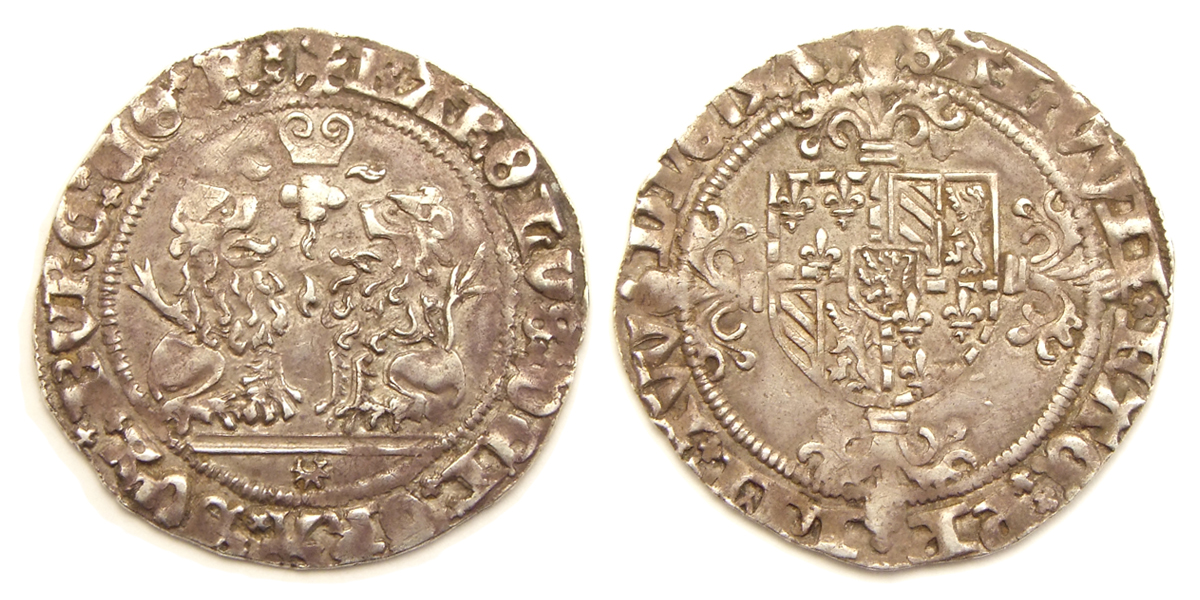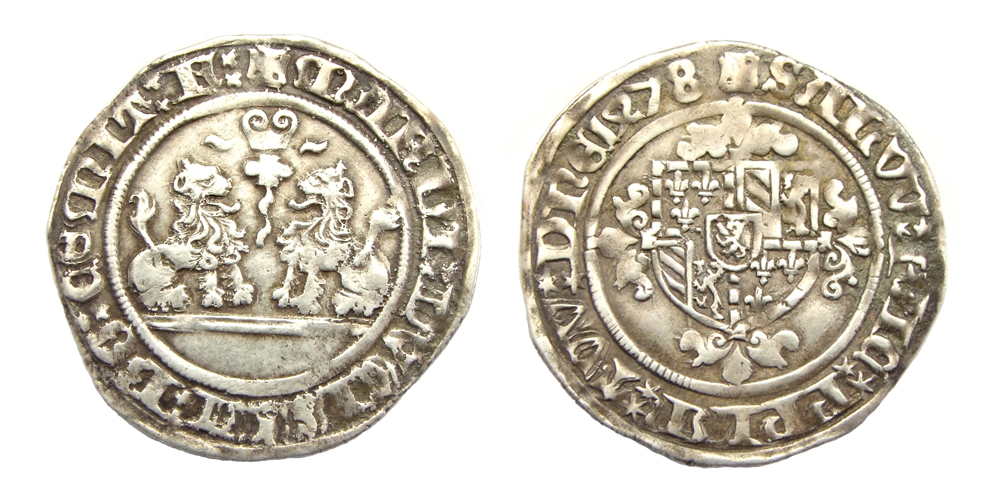Briquet (coin) on:
[Wikipedia]
[Google]
[Amazon]
 A briquet (
A briquet (
 A briquet (
A briquet (Dutch
Dutch commonly refers to:
* Something of, from, or related to the Netherlands
* Dutch people ()
* Dutch language ()
Dutch may also refer to:
Places
* Dutch, West Virginia, a community in the United States
* Pennsylvania Dutch Country
People E ...
: vuurijzer) is a Medieval silver coin, first introduced by Charles the Bold
Charles I (Charles Martin; german: Karl Martin; nl, Karel Maarten; 10 November 1433 – 5 January 1477), nicknamed the Bold (German: ''der Kühne''; Dutch: ''de Stoute''; french: le Téméraire), was Duke of Burgundy from 1467 to 1477.
...
, Duke of Burgundy
Duke of Burgundy (french: duc de Bourgogne) was a title used by the rulers of the Duchy of Burgundy, from its establishment in 843 to its annexation by France in 1477, and later by Holy Roman Emperors and Kings of Spain from the House of Habsburg ...
in 1474 (2nd Emission – Coinage Act of 27 October 1474). The last briquet was struck under Philip the Handsome
Philip the Handsome, es, Felipe, french: Philippe, nl, Filips (22 July 1478 – 25 September 1506), also called the Fair, was ruler of the Burgundian Netherlands and titular ruler, titular Duke of Burgundy from 1482 to 1506, as well as the fir ...
(6th Emission – Coinage Act of 16 March 1492). The name briquet refers to the fire steel or flint which was chosen by Philip the Good
Philip III (french: Philippe le Bon; nl, Filips de Goede; 31 July 1396 – 15 June 1467) was Duke of Burgundy from 1419 until his death. He was a member of a cadet line of the Valois dynasty, to which all 15th-century kings of France belonge ...
as a personal emblem. The flint was such a favourite Burgundian symbol that it has been used on many coins struck by the successors of Philip the Good, and was used in the chain of the Order of the Golden Fleece
The Distinguished Order of the Golden Fleece ( es, Insigne Orden del Toisón de Oro, german: Orden vom Goldenen Vlies) is a Catholic order of chivalry founded in Bruges by Philip the Good, Duke of Burgundy, in 1430, to celebrate his marriage ...
.Bert van Beek, Hans Jacobi, Marjan Scharloo (1985): ''Klinkende Munt, Geschiedenis van het geld in de Lage Landen'', Elsevier
A single briquet was introduced with a value of one stuiver
The stuiver was a coin used in the Netherlands, worth Dutch Guilders ( 16 ''penning'' or 8 ''duit'', later 5 cents). It was also minted on the Lower Rhine region and the Dutch colonies. The word can still refer to the 5 euro cent coin, which ...
, other issues were a double and half briquet.

References
{{reflist Medieval_currencies